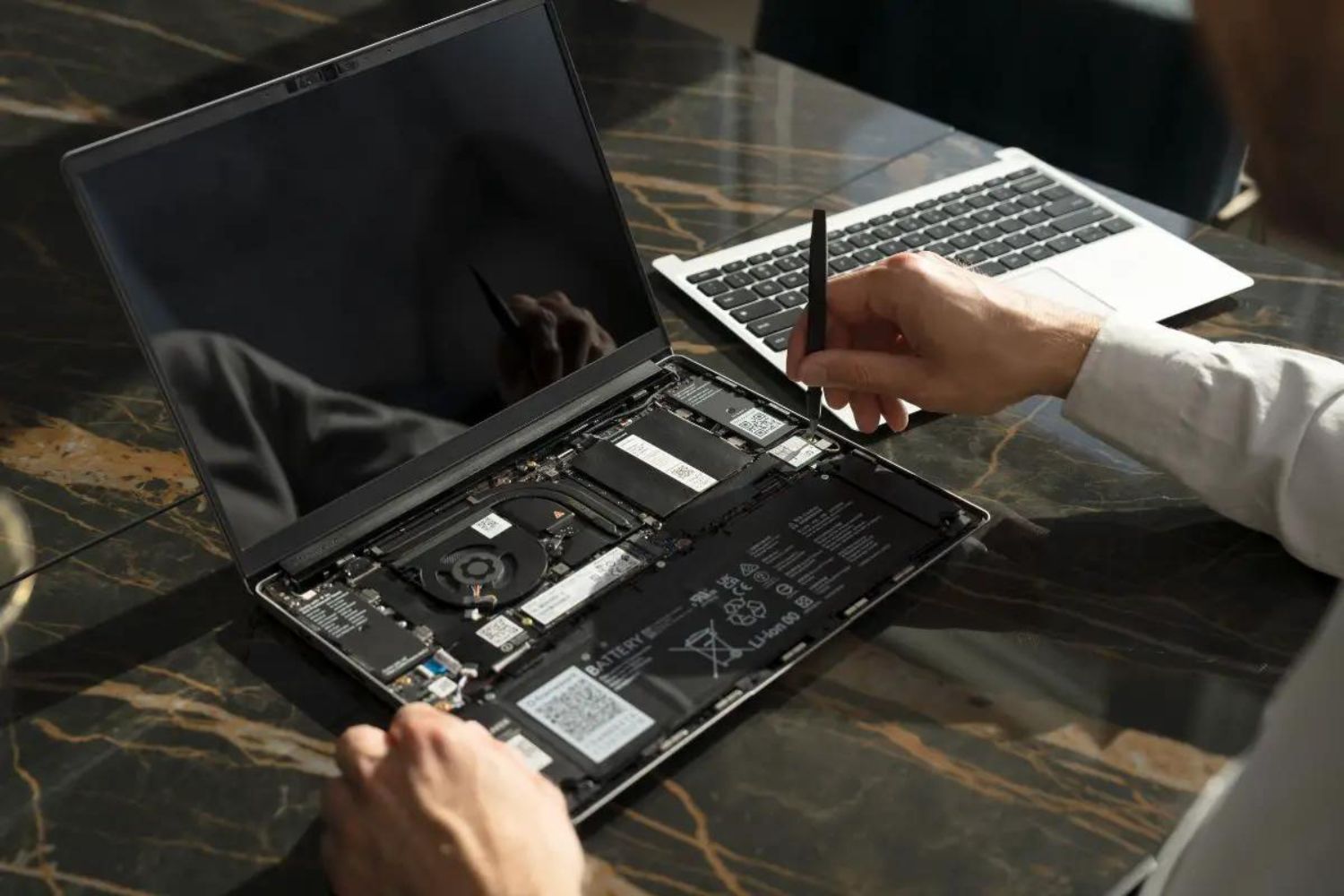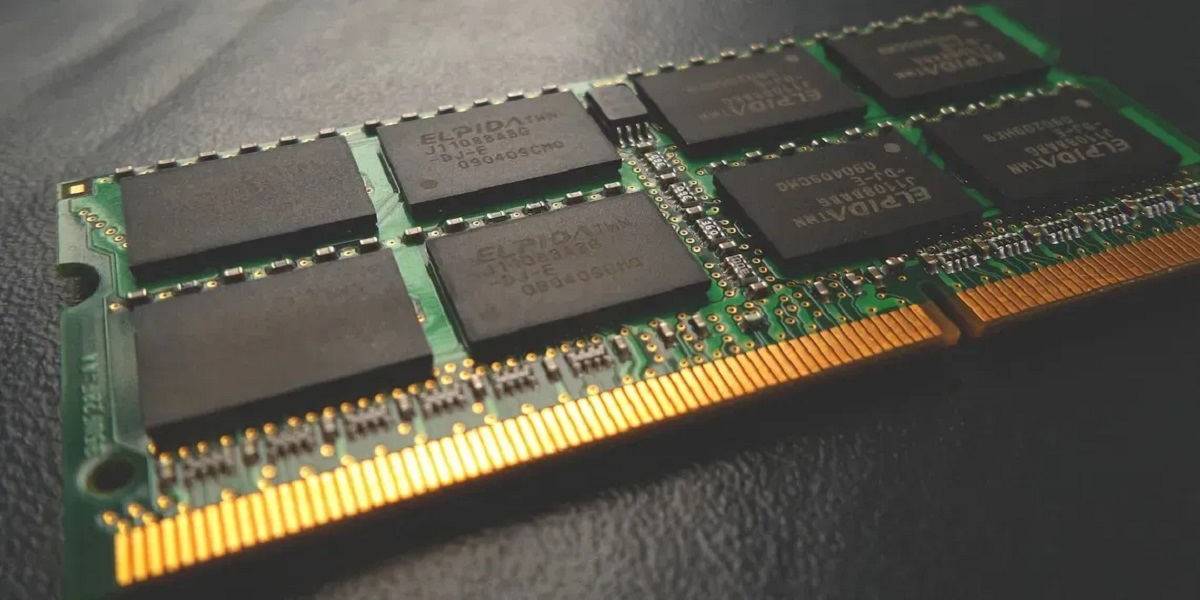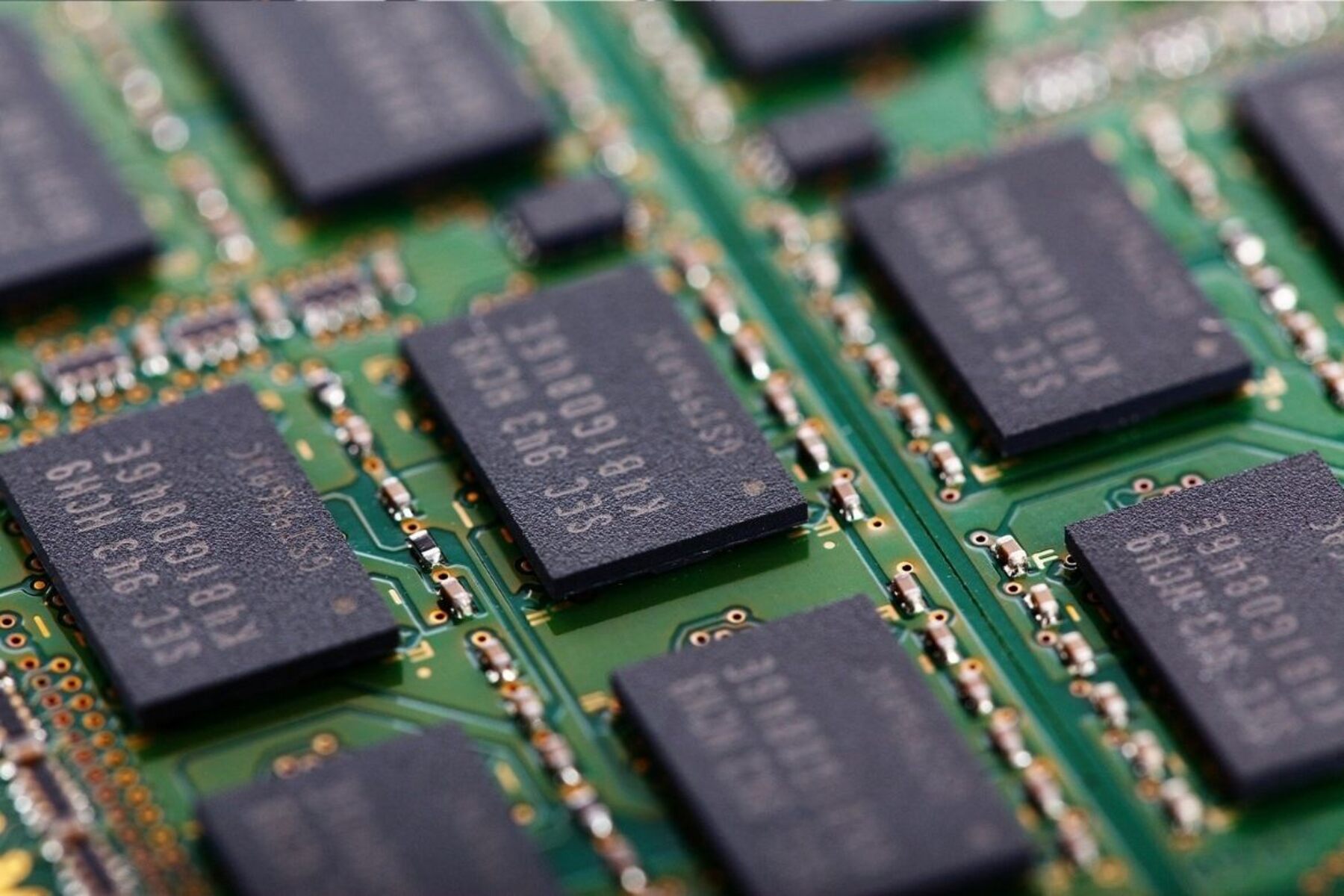Introduction
When it comes to web browsing, Google Chrome is a popular choice for users around the world. It offers a fast and seamless browsing experience, but one common concern among Chrome users is the amount of RAM it consumes. RAM, or Random Access Memory, is a critical component of any computer system as it stores data that is actively being used by applications and processes.
Chrome’s reputation for being a memory hog has sparked debates among tech enthusiasts, with some arguing that it is bloated and others defending it for its features and performance. So, how much RAM should Chrome use?
In this article, we will delve into the factors that influence Chrome’s RAM usage and provide guidelines on how much RAM you should allocate for a smooth browsing experience. We will also share some tips on how to optimize Chrome’s RAM usage without compromising its functionality.
Whether you’re a casual web surfer or a power user who relies heavily on Chrome for work or entertainment, understanding how Chrome utilizes RAM is essential for optimizing your browsing experience.
What is RAM?
Random Access Memory (RAM) is a crucial component of a computer system that plays a significant role in its overall performance. It is a type of volatile memory that stores data that is actively being accessed by the computer’s processor.
RAM allows quick access to data, enabling the computer to run programs and execute tasks efficiently. When you open an application or a file, it is loaded into the RAM for faster processing. The more RAM your computer has, the more data it can store and access quickly.
Unlike permanent storage devices such as hard drives or solid-state drives, RAM is temporary. It retains data only as long as the computer is powered on. Once the computer is shut down, the data stored in RAM is erased.
RAM provides speedy access to data compared to other storage devices. It is much faster than reading or writing data from a hard drive or SSD, which improves overall system performance. Having an adequate amount of RAM is crucial to ensuring smooth multitasking, especially when running resource-intensive applications.
RAM capacity is typically measured in gigabytes (GB). Common RAM sizes for personal computers range from 4GB to 32GB or more. The amount of RAM you need largely depends on the intended usage of your computer. For basic tasks like web browsing, word processing, and email, 4GB to 8GB of RAM is generally sufficient. However, for more demanding applications such as video editing or gaming, higher RAM capacities are recommended to ensure optimal performance.
Next, we will explore how Chrome utilizes RAM and the factors that affect its usage. Understanding this will help us determine the appropriate amount of RAM to allocate for Chrome.
How does Chrome use RAM?
Chrome is known for its multi-process architecture, which allows each tab, extension, and plugin to run as a separate process. While this design provides stability and security, it also contributes to Chrome’s higher RAM usage compared to other browsers.
When you open Chrome and start browsing, each tab you open is treated as an individual process. This means that each tab has its own memory allocation, separate from the main browser process. This isolation ensures that if one tab crashes or encounters an issue, it doesn’t affect the other open tabs or the entire browser.
Within each tab, Chrome divides the content into multiple layers, such as the HTML structure, CSS styles, images, and JavaScript code. Each layer is handled by separate processes, enabling better parallel processing and smoother rendering.
Extensions and plugins also consume additional memory in Chrome. While these add-ons provide useful functionality, they can also contribute to increased RAM usage. Each extension or plugin runs as a separate process, consuming additional resources.
As you open new tabs or load heavy websites with multimedia content, Chrome dynamically allocates more RAM to accommodate the additional processes and data. This adaptive memory allocation allows for a smoother browsing experience and ensures that tabs and plugins do not interfere with each other.
However, the downside is that the more tabs, extensions, and plugins you have open, the more RAM Chrome will utilize. If you have limited RAM capacity on your computer, having too many open tabs or resource-intensive extensions can lead to sluggish performance and potential system slowdowns.
In the next section, we will explore the various factors that can influence Chrome’s RAM usage, shedding light on why it may consume more memory in certain situations.
Factors that affect Chrome’s RAM usage
Multiple factors can influence the amount of RAM that Chrome utilizes. Understanding these factors can help you optimize your browsing experience and allocate the appropriate amount of RAM for Chrome. Let’s explore some of the key factors:
Number of open tabs: Chrome’s multi-process architecture allocates memory for each tab individually. Having numerous open tabs simultaneously can significantly increase RAM usage. If you find Chrome consuming excessive RAM, consider closing tabs that you no longer need.
Tab content and complexity: Heavy websites with multimedia elements, animations, and JavaScript-intensive applications tend to consume more RAM. Complex web content requires additional processing and memory allocation. Consider closing tabs with resource-intensive content or using extensions that suspend tabs to reduce RAM usage.
Extensions and plugins: Chrome’s vast library of extensions and plugins can enhance your browsing experience, but they also consume additional memory. Each extension and plugin runs as a separate process, contributing to increased RAM usage. Disable or remove unnecessary extensions to reduce memory overhead.
Memory leaks: Sometimes, Chrome may encounter memory leaks, resulting in increasing RAM usage over time. A memory leak occurs when an application fails to release memory that is no longer in use. Keeping Chrome up to date with the latest version and regularly restarting the browser can help mitigate memory leak issues.
Background processes: Chrome may run background processes even when you’re not actively using the browser. These include tasks like syncing bookmarks, checking for updates, or running extensions that require continuous background activity. Keep an eye on processes running in the background and disable unnecessary ones to free up RAM.
System resources: Chrome’s RAM usage is influenced by the overall resources available on your computer. If your system has limited RAM capacity or is running other resource-intensive applications simultaneously, Chrome’s RAM usage may be impacted. Consider closing unnecessary applications or upgrading your computer’s RAM for better performance.
Considering these factors, it’s important to strike a balance between a smooth browsing experience and efficient memory usage. In the next section, we’ll discuss the recommended amount of RAM for Chrome to ensure optimal performance.
Recommended RAM for Chrome
To determine the recommended amount of RAM for Chrome, you should consider your browsing habits, the number of tabs you typically have open, and the other applications you run concurrently on your computer.
For basic web browsing, email, and light multitasking, a computer with 4GB to 8GB of RAM should generally suffice. This amount of RAM allows Chrome to run smoothly and handle a moderate number of open tabs without causing significant performance issues.
However, if you frequently open multiple tabs simultaneously or use Chrome for more resource-intensive tasks, such as running web applications, video conferencing, or online gaming, you may benefit from upgrading to 16GB or more of RAM. This additional RAM provides ample headroom for Chrome to allocate memory to multiple processes and ensures a lag-free browsing experience.
It’s important to note that the amount of RAM your computer needs is not solely dependent on Chrome. Other applications and processes running in the background also consume system resources. If you run memory-intensive software or perform tasks that require a significant amount of RAM, it’s advisable to have even more than 16GB of RAM.
Considering the increasing demands of modern web content, the complexity of websites, and the evolution of web technologies, having sufficient RAM allows Chrome to handle these challenges effectively. It ensures that you can browse seamlessly, switch between tabs effortlessly, and run web applications smoothly.
Ultimately, the recommended amount of RAM for Chrome depends on your specific usage requirements and your computer’s capabilities. If you’re unsure about the optimal RAM configuration for your needs, consult the manufacturer’s recommendations or seek the advice of a technical professional.
In the next section, we will share some tips to help you reduce Chrome’s RAM usage, allowing you to maximize performance on systems with limited RAM.
Tips to reduce Chrome’s RAM usage
If you find Chrome consuming excessive RAM or if you’re using a computer with limited memory, there are ways to optimize Chrome’s RAM usage without sacrificing functionality. Here are some helpful tips:
1. Limit the number of open tabs: Each open tab in Chrome consumes memory. To reduce RAM usage, close tabs that are no longer needed. Consider using bookmarks or browser extensions that allow you to save tabs for later.
2. Disable or remove unnecessary extensions: Extensions can consume significant memory, especially if they run continuously in the background. Disable or remove extensions that you don’t use frequently or that you no longer need.
3. Use tab suspending extensions: Tab suspending extensions, such as The Great Suspender or OneTab, can help reduce RAM usage by suspending inactive tabs. These extensions unload tab contents from memory, but they can easily be restored when needed.
4. Avoid resource-intensive websites: Some websites, particularly those with heavy multimedia content or complex animations, can consume a significant amount of RAM. Be mindful of the websites you visit and consider alternative websites with lighter content whenever possible.
5. Monitor task manager: Chrome’s built-in task manager can help you identify tabs or extensions that are consuming excessive memory. Press Shift + Esc (or go to Menu > More Tools > Task Manager) to access it. Close tabs or extensions that are using an unusually high amount of memory.
6. Keep Chrome up to date: Keeping Chrome updated ensures you have the latest bug fixes and improvements, which can help reduce memory-related issues that might cause high RAM usage.
7. Enable hardware acceleration selectively: Chrome’s hardware acceleration offloads some processing to the GPU, which can improve performance. However, it can also increase memory usage. Consider enabling hardware acceleration only when necessary or for specific tasks.
8. Use fewer tabs in incognito mode: Incognito mode in Chrome consumes additional memory because it operates separately from your regular browsing session. Try to minimize the number of incognito tabs to reduce RAM usage.
9. Close Chrome when not in use: If you’re not actively using Chrome, closing the browser entirely can free up system resources and reduce memory usage.
10. Consider upgrading your RAM: If you consistently experience high RAM usage in Chrome and your computer allows for RAM upgrades, increasing your system’s RAM capacity can significantly improve performance.
Implementing these tips can help you optimize Chrome’s RAM usage and ensure a smoother browsing experience, even on machines with limited memory resources.
In the next section, we will conclude the article by summarizing the key points discussed and emphasizing the importance of balancing RAM allocation and browser functionality.
Conclusion
Effective management of RAM usage is crucial for optimizing Chrome’s performance and ensuring a seamless browsing experience. Understanding how Chrome utilizes RAM, considering the factors that affect its usage, and implementing strategies to reduce memory consumption can significantly improve the overall efficiency of the browser.
RAM is the temporary storage that allows the computer to run programs efficiently, including Chrome. Chrome’s multi-process architecture, extensive use of separate processes for tabs and extensions, and the complexity of web content can contribute to its higher RAM usage compared to other browsers.
For most users engaging in basic web browsing and light multitasking, having 4GB to 8GB of RAM is typically sufficient to run Chrome smoothly. However, if you frequently open multiple tabs, run resource-intensive web applications, or engage in activities like video conferencing or online gaming, upgrading to 16GB or more of RAM is recommended.
To reduce Chrome’s RAM usage, consider limiting the number of open tabs, disabling unnecessary extensions, using tab suspending extensions, avoiding resource-intensive websites, and monitoring memory usage through Chrome’s task manager. Keeping Chrome up to date, selectively enabling hardware acceleration, and closing Chrome when not in use are also effective strategies to optimize RAM usage.
Ultimately, it is crucial to strike a balance between allocating sufficient RAM for Chrome and ensuring optimal performance on your computer. If you consistently experience high RAM usage or if your system has limited memory capacity, consider upgrading your computer’s RAM to accommodate the demands of modern web browsing and resource-intensive applications.
By following these tips and strategies, you can manage Chrome’s RAM usage effectively, enhance your browsing experience, and maintain optimal system performance.
We hope this article has provided valuable insights into understanding and managing Chrome’s RAM usage. Implement these recommendations to optimize your browsing experience and make the most of the powerful features that Chrome has to offer.

























